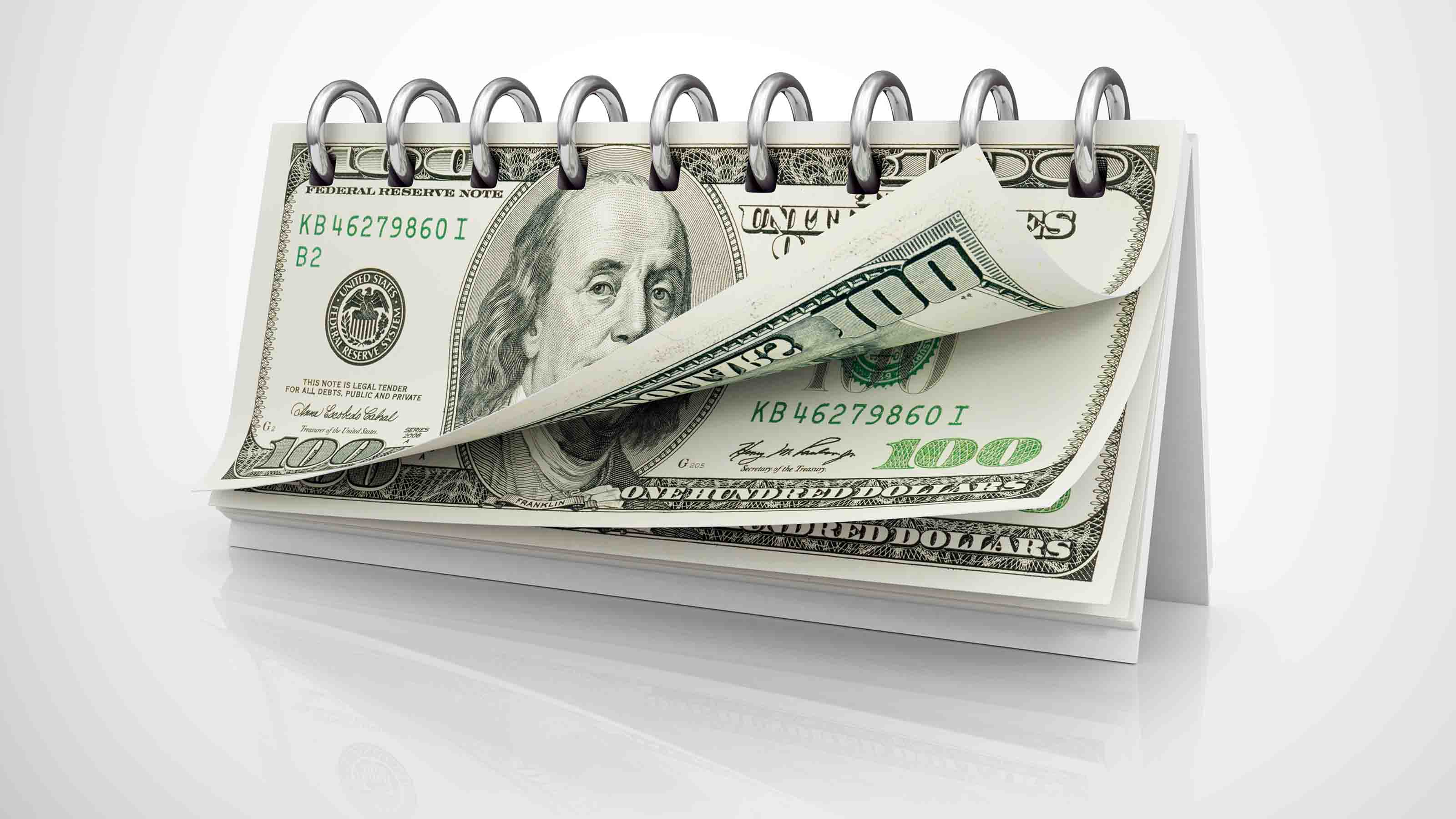Don't Overlook Ginnie Maes
These U.S. guaranteed securities have held up well despite the financial meltdown and have better yields than Treasuries.

It's not happening yet, but massive borrowing will inevitably boost long-term interest rates and hammer the market value of Treasury bonds. At the same time, I understand why you like federal guarantees. This presents an unpleasant choice: Hold onto Treasuries that are in peril of losing significant market value, or move to edgier neighborhoods of the bond marketplace. BBB-rated and junk corporate bonds pay unusually high yields now relative to the Treasury. Emerging markets bond funds are having a good run. But I cannot recommend you take more than a token position to junk and foreign bonds if you're managing irreplaceable savings.
| Row 0 - Cell 0 | Where to Find Top Yields |
| Row 1 - Cell 0 | A Dividend ETF Disappoints |
| Row 2 - Cell 0 | Investments That Pay You Every Month |
Ideally, you want something that has the government's backing that pays more than 3.2% for ten years or 4.1% for 30, the current yields on Treasury debt. You can buy a ten-year FDIC-insured CD from Charles Schwab that pays interest monthly but still earn just 3.85%. At that rate you may as well feed an online savings account for 2% or so and wait for CDs to pay better as the economy recovers and banks bid up for deposits.
However, there's one other, often overlooked, U.S. guaranteed alternative, Ginnie Maes. It sounds crazy to praise mortgage-related investments so soon after mortgage derivatives incinerated Wall Street and the world economy, but the Ginnie Mae brand is different.
From just $107.88 $24.99 for Kiplinger Personal Finance
Become a smarter, better informed investor. Subscribe from just $107.88 $24.99, plus get up to 4 Special Issues

Sign up for Kiplinger’s Free Newsletters
Profit and prosper with the best of expert advice on investing, taxes, retirement, personal finance and more - straight to your e-mail.
Profit and prosper with the best of expert advice - straight to your e-mail.
GNMA, formally known as Government National Mortgage Association, isn't a direct lender or a for-profit financial firm. It is an agency within the U.S. Department of Housing and Urban Development that unlike Fannie Mae and Freddie Mac never was a stockholder-owned corporation whose managers had any incentive to inflate earnings to try to pump the stock price. Ginnie simply stamps Uncle Sam's full faith and credit on pools of conservative privately-issued home loans.
Since the start of what we call the financial meltdown last year, GNMA securities have stood firm. From mid-September through May 20, the popular Vanguard GNMA fund (symbol VFIIX), the category's largest, has returned 6%, to 4% for Vanguard's broad bond market index ETF and even less for some other ostensibly non-mortgage-related investments. Monthly cash distributions are off slightly the last couple of months, but net asset value per share is up from $10.31 to $10.70, quite a leap in this kind of fund over a short an interval.
This isn't due to any unique trading wizardry. Other GNMA funds, such as those from BlackRock and Payden, did as well or better. American Century's and Fidelity's GNMA funds virtually equaled Vanguard. The Dreyfus GNMA fund can invest up to 20% in credit card receivables and non-government-guaranteed mortgage securities, so it's one of the category's laggards. But it still is ahead since Lehman Brothers vanished.
Clearly, this is a superb showing in challenging times. GNMA funds did get some help from the red tape and scarce credit that's made it hard for homeowners to refinance mortgages at lower rates. Refis are a headache for investors in mortgage pools because lower-paying loans replace higher-paying ones.
Your best environment is for rates to hold fairly steady. Rising rates will erode some principal, but even there, you get a break. If mortgage rates climb, and they should if long-term Treasury rates do, many of the 6% loans you find in current GNMA portfolios will stick. They won't refi, but they also won't default. Ginnie isn't a party to questionable adjustable-rate or interest-only or jumbo mortgages. Most of its guarantees are on modest-sized loans under low-risk programs like the Veterans Administration.
I asked a broker for some current quotes on individual GNMA securities. You need $25,000, so here's one area of bonds where I prefer funds with no reservations -- and besides, when rates are rising, funds have a buffer of some older higher-rate pools. The broker said business is slow in individual Ginnies because the strong performance has narrowed the spread between GNMA yields and Treasury yields.
But the mortgages still do pay better. A newly-issued GNMA pool in April was priced to yield an estimated 3.8% on the assumption that half of the loans would be refinanced or paid off in three years. A three-year Treasury, and I know that's not a precise comparison because mortgages are supposed to last 30 years, pays 1.3%. That's still scanty. But 3.8% for a while is good enough for full faith and credit.
Profit and prosper with the best of Kiplinger's advice on investing, taxes, retirement, personal finance and much more. Delivered daily. Enter your email in the box and click Sign Me Up.

Kosnett is the editor of Kiplinger Investing for Income and writes the "Cash in Hand" column for Kiplinger Personal Finance. He is an income-investing expert who covers bonds, real estate investment trusts, oil and gas income deals, dividend stocks and anything else that pays interest and dividends. He joined Kiplinger in 1981 after six years in newspapers, including the Baltimore Sun. He is a 1976 journalism graduate from the Medill School at Northwestern University and completed an executive program at the Carnegie-Mellon University business school in 1978.
-
 Vesting, Catch-Ups and Roths: The 401(k) Knowledge Quiz
Vesting, Catch-Ups and Roths: The 401(k) Knowledge QuizQuiz Test your understanding of key 401(k) concepts with our quick quiz.
-
 Why You Should Pay Attention to Company Guidance
Why You Should Pay Attention to Company GuidanceUnderstanding how corporate profit forecasts affect analysts’ estimates and stock ratings can help you make investment decisions.
-
 How to Protect Yourself and Others From a Troubled Adult Child
How to Protect Yourself and Others From a Troubled Adult ChildThis case of a violent adult son whose parents are in denial is an example of the extreme risks some parents face if they neglect essential safety precautions.
-
 The Most Tax-Friendly States for Investing in 2025 (Hint: There Are Two)
The Most Tax-Friendly States for Investing in 2025 (Hint: There Are Two)State Taxes Living in one of these places could lower your 2025 investment taxes — especially if you invest in real estate.
-
 The Final Countdown for Retirees with Investment Income
The Final Countdown for Retirees with Investment IncomeRetirement Tax Don’t assume Social Security withholding is enough. Some retirement income may require a quarterly estimated tax payment by the September 15 deadline.
-
 Why Investors Needn't Worry About U.S. Credit Downgrade
Why Investors Needn't Worry About U.S. Credit DowngradeFitch Ratings The United States saw its credit rating downgraded for just the second time in history, but experts aren't worried about the long-term damage to stocks.
-
 Income-Investing Picks for a Recession
Income-Investing Picks for a RecessionInvesting for Income Some consequences of an economic downturn work to the benefit of fixed-income investors. Here are three fund ideas that fit the bill.
-
 Dogs of the Dow Are 2022's Best in Show
Dogs of the Dow Are 2022's Best in Showdividend stocks Some of the best investments for income investors in a volatile 2022 have come from the Dogs of the Dow.
-
 Bond Values in a Volatile Market
Bond Values in a Volatile MarketInvesting for Income While the market's instability may not be over just yet, the latter half of the year should be less daunting – and possibly more rewarding – for investors.
-
 Should You Buy Bonds Now? What To Consider
Should You Buy Bonds Now? What To Considerbonds The fixed-income market has been turned on its head in recent years, but there are still opportunities for those looking to buy bonds again.
-
 Dividend Dates: A Beginner's Guide
Dividend Dates: A Beginner's Guidedividend stocks Everything you need to know about ex-dividend dates, dividend announcements and other parts of the dividend calendar.